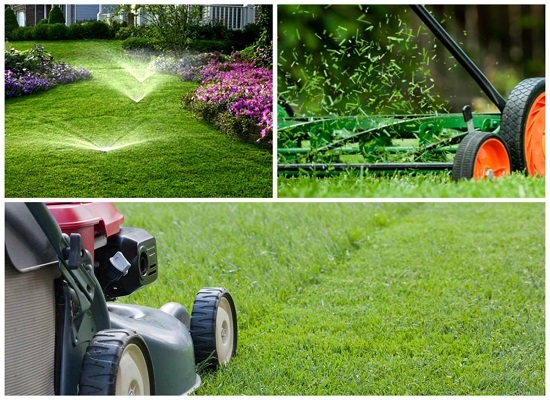One of the first things to look for in a lawn suffering from a drought is to see whether your feet leaves an impression in the grass as you walk across it. Lawns which are in dire need of water will fail to spring back once it’s been stepped on. Then there are the obvious visual signals which can help you detect it even from a distance. Thirsty grass looks extremely dry and loses its lustre. It will also gradually change colour from shiny and bright green to a very dull grey-green or blue-green tint. As the condition gets worse, it will continue to fade to a wheat or tan colour. Lawns which are well established and mature have the best chance of beating the water shortages and the scorching heat.

Here are a few ideas which you can keep in mind and implement as you work on keeping your lawn in its best form during the summers.
Water management
Lawns majorly benefit from receiving about an inch of water every week. However, the way in which the water is delivered is crucial to creating a healthy lawn which can beat the heat. Irrigate your lawn up to twice a week in the absence of rain so that it receives a total of one inch of water. One way of checking if it’s exactly one inch is by placing empty tuna cans in various places around your lawn. Once the can is completely submerged in water, it means there’s an inch of water in that area. This irrigation method delivers adequate water to soak the soil, encouraging deeper root growth. This is necessary for the lawns to survive during droughts. When water is applied frequently and in smaller amounts, the roots stay closer to the surface making it impossible for deep soaking. This puts them at a greater risk of drying out.
Lawn mowing
As a drought approaches, allow your lawn to grow taller. The growth might go into a semi-dormant state and slow down, but the fact is that the taller the blades are, the deeper the root system will be. The height of the blades is usually equal to the length of the roots, if you manage to water your plants properly. You must encourage deep root growth. It’s perhaps the most important element in recovery and survival.
Grasscycling
Allow the grass clippings to stay on the lawn after you cut the lawn. Most mowers these days can cut the grass blades into such small pieces; it’s practically invisible to the naked eye. It’s beneficial as the clippings return many valuable nutrients as well as providing moisture to the lawn. This doesn’t just make your lawn healthier all year but especially during phases of excessive stress.
There are numerous ways in which you can help your lawn survive the drought during harsh summers. Just make sure you take good care of your lawn whenever you can. This ensures that your lawn is lush, green and full of life once the drought is over.

